The Developed Role of the Prince in Disney’s Live Action Cinderella (2015)
The story of Cinderella has many adaptations from the versions written by the Brothers Grimm and Charles Perrault to Walt Disney’s 1950 Cinderella and the new live action film in 2015 by Disney directed by Kenneth Branagh. Many reincarnations of the Cinderella story throughout time provide different perspectives and characterizations, such as a more diverse cast in the 1997 Rogers and Hammerstein’s Cinderella starring Brandy and Whitney Houston, and a more feminist approach in Ever After starring Drew Barrymore. There has been a lot of scholarship discussing Cinderella and her depictions. Where there is a lack of scholarship is concerning the role of the Prince in Cinderella and its many adaptations. Maria Tartar argues:
That male Cinderellas have disappeared from our own cultural horizon challenges us to understand what it was that once allowed both girl and boys to participate in the developmental trajectory outlined in the tale 1 .
Male Cinderellas or male participation in the fairy tale was diminished in early versions, and it is important to acknowledge the male roles to understand cultural and social changes. The role of the Prince is a major distinction between Perrault’s, Grimm’s, and Disney’s 1950 version of Cinderella from the new live action film produced in 2015. In the live action film, the characterization of the Prince is deliberately more in-depth. The character shows more growth because he is a more active participant of the story, and his relationships with other characters are more developed. This deliberate change in characterization demonstrates the changes in social values and gender norms that have occurred since the original fairy tales and adaptations were created.
Early Versions of Cinderella’s Prince in Literature and Film
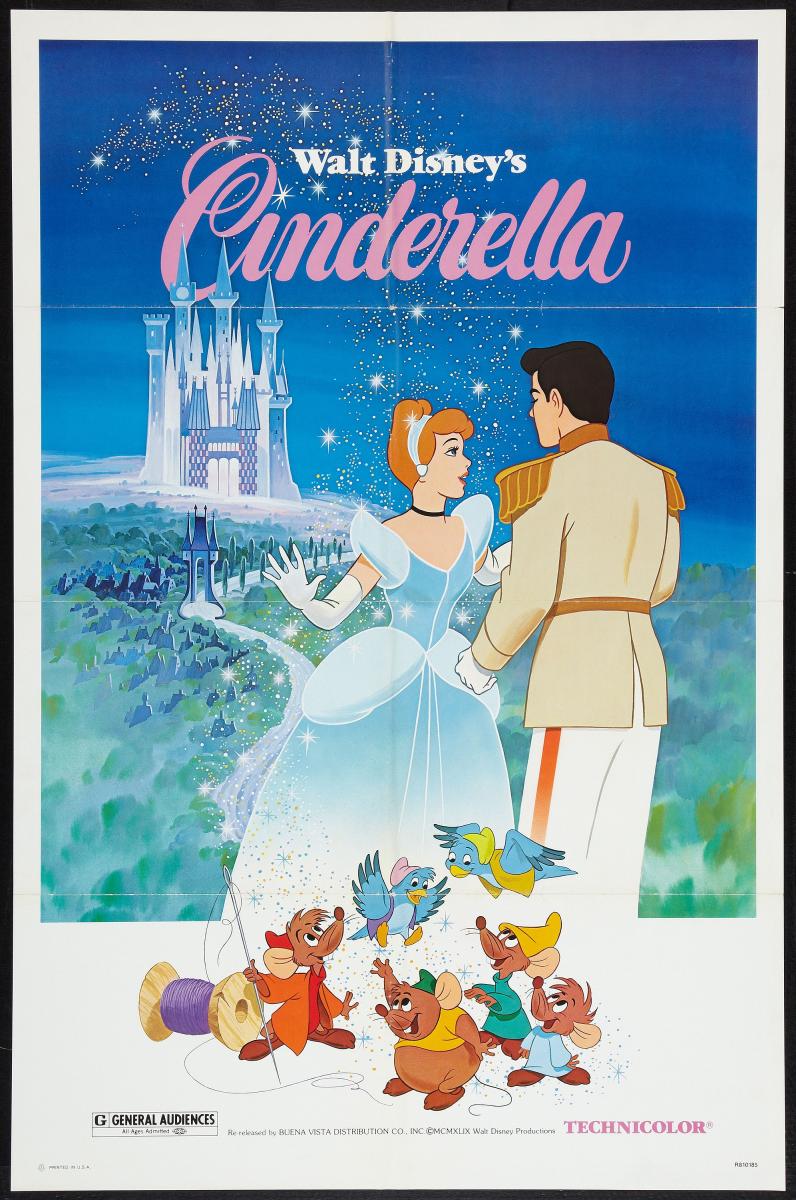
To gain a better insight in to how the Prince’s role has changed we need to look at the depictions of the Prince in the earlier versions of Cinderella that were used as inspiration for the live action film. In the Grimm’s Cinderella, the Prince is little more than a plot device that has an extremely limited part in the story as a character and has little dialogue. The Prince in this version is simply used to relieve Cinderella from her abusive family, and there is very little about how he thinks or acts other than he is looking for a bride. For example, the Prince says very little to or about Cinderella other than, “She is my partner,” (Tartar, p. 119-120). The Prince is little more than an ideal or a symbol for society to learn social norms that males should adhere to and learn from. This ideal of a limited symbolic character is even more evident in Perrault’s version of the fairy tale, because the Prince portrays a less integral role in the story. He has no dialogue and he is only referred to as “the prince” or as “the king’s son” 2. His lack of dialogue and that he is usually referred by his relationship to the King proves how little importance the Prince has in this version. In both versions of the tale, there is no physical or emotional description of the Prince. This adds and promotes the idea that he was used as a faceless male symbol for society.
Walt Disney used Grimm’s and Perrault’s versions of Cinderella as inspiration for his film produced in 1950. This is evident because of the use of the fairy godmother character, a character exclusively in the Perrault version. Disney used the general outline of the story of Cinderella that both the Grimm and Perrault versions adhere to. The following are the necessary plot points in the Cinderella tale: 1) Cinderella is abused by her family or step-family, 2) A Prince hosts a ball that Cinderella attends despite her family’s wishes, 3) Cinderella meets the Prince at the ball, they fall in love, and she loses her glass slipper, and (4) the Prince searches for her using the glass slipper and marries her in the end. These are the necessary elements that make up the Cinderella tale and show that Disney was influenced by the original written versions of the tale. It is necessary to discuss how Disney adapted many of these fairy tales in to animated films, and the impact his versions have had on society. Jack Zipes discusses how Disney’s films influenced the ideals of the fairy tale genre in his article, “Breaking the Disney Spell”:
His technical skills and ideological proclivities were so consummate that his signature has [obscured] the names of Charles Perrault, the Brothers Grimm, Hans Christian Andersen, and Carlo Collodi. If children or adults think of the great classical fairy tales today, be it Snow White, Sleeping Beauty, or Cinderella, they will think Walt Disney. Their first and perhaps lasting impressions of these tales and others will have emanated from a Disney film, book, or artifact 3.
Zipes describes the impact that Disney had on the views of fairy tales by today’s society. People today will tend to remember Walt Disney’s classic films instead of their literary predecessors. Zipes also discusses how Walt Disney transformed literary fairy tales. Zipes states:
His [Walt Disney’s] adaptation of the literary fairy tale for the screen led to the following changes in the institution of the genre: … (4) Though the characters are fleshed out to become more realistic, they are also one-dimensional and are to serve functions in the film. There is no character development because the characters are stereotypes arranged according to a credo of domestication of the imagination 4.
This explains that Disney’s one-dimensional characters were used to promote the social ideals of domestication that were valued in the time he produced these films, and explains why we still see a flat, one-dimensional, character in Disney’s first Cinderella (1950) film. In the original Disney film, the Prince is only in two scenes: the ball and the final wedding scene. The Prince’s voice is only heard in the ball scene during the song, “So This is Love,” and when asking Cinderella not to leave the ball before he knows who she is. This indicates that his relationship with Cinderella is strictly symbolic because there is no development of their relationship. This is proven because they never discuss their personal or emotional lives when they are in scenes together. The Prince and Cinderella simply sing about love and discuss the direct situation, i.e. Cinderella needing to leave the ball. The darkness and montage of movement in the dance scene adds to the faceless ideal of the Prince. There is more proof of lack of development in the scene where the King discusses the Prince with the Grand Duke. Though the King discusses his son, it is only to say that he must marry and does not provide the audience with much description of the son. We see paintings of the Prince growing up but it adds more to the character of the King, we can understand that he now feels lonely with his son grown up and would now like grandchildren. The King says: “You don’t know what it means to see your own child to grow farther and farther and farther away from you… I want to hear the pitter-patter of little feet again.” Though we see and hear of the Prince in this scene, we learn more about the King than we do him. As with Grimms’ and Perrault’s versions, Disney’s first version of Cinderella (1950) provides a very flat, one-dimensional character, that is little more than a symbol for society to look up to.
Cinderella (2015)
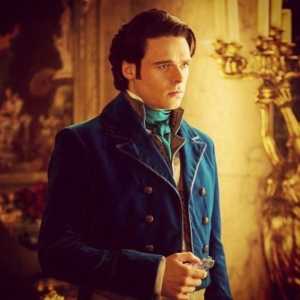
The inspiration for the live action film came from the previously discussed versions of Cinderella but it differs drastically from those versions with its characterization of the Prince. Visually they are many similar scenes in the live action Cinderella film released in 2015 to the earlier version released in 1950. In addition, we see many allusions to the Grimms’ version, with Ella asking her father to bring the first branch his shoulder touches to her when he returns from his trip, and to Perrault’s version where the plot outline, discussed earlier in this article, was used as the foundation of the film, just as with Disney’s earlier version. I interviewed the script writer of the live action Cinderella, Chris Weitz, via email about the film and he discussed the many inspirations they used:
Catrina: “Did you use ideas from the original (1950) Cinderella, other adaptations, and/or the original text from Perrault?”
Chris Weitz: “Oh yes, throughout. The idea is to invent and elaborate without betraying the memories people have of seeing the animated version. Which is different of course, from the moment-to-moment specifics of the animated film 5 .”
Weitz is explaining a unique task that all adaptations must do, that is updating a classic or popular story to fit with current social ideals, while at the same time allowing for the nostalgia of the original or past adaptations.
The specific changes and additions made in the live action film show many differences in the social norms of the time. One way the live action film differs from its predecessors is by giving the Prince a name, providing him with a back-story, and giving him a personality. In the film, the Prince is referred to as ‘Kit’. Other details about Kit are provided to the audience as well. Kit has been fighting in a war for his country, and he has been learning the duties of a king because his father is sick and he will soon ascend the throne. It is also known that Kit’s mother passed away when he was young. His father and the Grand Duke are insistent on him marrying a princess for the advantage of the kingdom so when the King passes away the kingdom will have strong allies when Kit becomes king. These seem like trivial facts, but when compared to earlier versions of Cinderella, where the Prince does not have a name and the audience knows nothing about him other than that he is a prince of a kingdom, it fully develops the character. It also broadens the story from the original intent and adds an interesting perspective to the narrative.
The live action film shows Kit’s many interactions and relationships with other characters which enhances his own depiction. Kit’s relationships with the Captain of the Guard, his father, and Cinderella prove that he is more than the one-dimensional character seen in the original Cinderella adaptations. In scenes with his friend, the Captain of the Guard, Kit’s past and current conflicts are discussed, and it shows his relationship with someone that is not Cinderella or his family. We see them in a back and forth with one another in the scene in which the men of the guard are practicing fencing. It is a fast-moving and highly social scene with many men practicing fencing together, and we see the casual nature of the relationship between Kit and his friend. The dialogue is quippy and they are wearing the same grey fencing suits, both which work to show the equality of their relationship. Kit looks to his friend for guidance and support in the film. This is especially apparent in the scene where the Captain notices Ella singing and notices that Madame Tremaine is lying when she says there are no other eligible maidens in the house. As Kit reveals that he has been hiding in the guard while they have been testing every eligible maiden with trying on the slipper, the Captain of the Guard helps his friend by going to find Ella and makes sure that Madame Tremaine no longer prevents her from seeing Kit. The character of the Captain of the Guard is unique compared to other adaptations of the Cinderella story, because we rarely see well-developed male relationships in the Cinderella adaptations, especially if they men are not related. In Brittany Candau’s book, Have Courage, Be Kind, The Tale of Cinderella, we see Kit and the Captain’s friendship expanded and learn that they worked together to stop the Grand Duke from hindering the search for Cinderella:
The grand search for the mystery princess was to commence the following morning. Knowing that the Duke would not exactly devote all his energy to the cause, Kit and the Captain devised a plan in the candlelight of Kit’s chambers.
…He [Kit] knew his orders to try the slipper on each and every maiden of the land would be carried out if he was there to make sure they were. And with his anonymity, he would be able to observe both the Duke and the maidens
…The Captain walked over to his friend, patting his shoulder. “Do not worry, Kit. The Duke said all of those things so that you marry Princess Chelina. It was quite evident by the way that woman looked at you at the ball, that she was smitten with you, as well. We will find her,” …Kit smiled gratefully 6.
The Captain and Kit know each other well and are obviously willing to help one another achieve their goals, in this case finding Cinderella. The Captain is a supportive friend to the Prince and we learn more about the Prince through their friendship. Their relationship helps portray Kit as more than a marriageable bachelor, but also a character who has his own story, struggles, and friends. The friendship of Kit and the Captain provides a positive male friendship that is not seen in any earlier versions of the Cinderella tale.
A vital relationship in the live action film that is absent in most early versions of Cinderella is the relationship between the Prince and his father. The film focuses on Kit’s relationship with his father. They are seen joking and bickering in their first scene together where the King is getting checked on by a doctor. Kit tells his father about the girl he met in the forest, Cinderella, and how he feels about her. The King tries to convince Kit to forget the girl. The most important scene between Kit and his father is when the King is dying and Kit is by his side to say goodbye. In the scene, Kit has tears in his eyes as he tells his father “I love and respect you but I will not [marry for advantage]. I believe that we need look no further than our own borders for strength or guidance. All we need is right before us. All we need is to have courage and be kind to see it,” The King responds by saying, “Just so. You’ve become your own man 7.” This revelation causes an emotional moment as they say I love you to one another. The cinematic elements of the scene are important to discuss because they enhance the emotion of the scene. The camera is shown close-up on both Kit and his father’s face as they are having the emotional discussion and the lightening is dim showing the gravity of the situation. The end of the scene shows Kit curled next to his father on his bed as the camera pans up showing a crown on the top of the Kings bedpost. This could symbolize the transfer of power and reiterate the idea, as the King said, that Kit has become his own man. Here is a strong father and son relationship, they are not afraid to show emotion and love for one another. This relationship contributes to the greater dimension of Kit’s character.
Finally, we have the relationship between Kit and Cinderella, or Ella as she is usually referred to except by her step-family. As discussed earlier the live action film shows a lot more interaction between these two main characters than in earlier versions where they barely, or if at all, share the page or scene together. Kit and Ella talk about how they are treated when they first meet in the forest and they are visibly intrigued by each other’s stories. In this scene Ella and Kit are circling each other on horses in the forest, adding to the excitement of meeting someone new and finding commonalities with that person. The warm lighting with the mystical and neutral setting of the forest allows Kit and Ella to meet as equals and learn more about one another. The ideal that they are equals is also reiterated in the fact that neither Ella or Kit say who they are, which means neither is above the other. This scene also shows a lot of the beginning connection between the two characters with the dialogue:
Ella: “Do they treat you well [at the palace where she thinks Kit is an apprentice?”
Kit: “Better than I deserve most likely. And you?”
Ella: “They treat me as well as they are able.”
Kit: “I’m sorry.”
Ella: “It’s not your doing.”
Kit: “Nor yours either I’ll bet 8.”
Kit realizes in this scene that Ella is not living in a good situation. In addition, Ella and Kit discuss things other than marriage or romance. They are discussing who they are as people and their personal stories. This distinguishes their relationship from earlier versions of the relationship between Cinderella and the Prince. It can be argued that this scene is why Kit becomes so adamant on finding Ella later in the story, because he knows that she is not in a safe environment and she may not be allowed to come forward to see him. We see this idea explicitly stated in Brittany Candau’s book:
For Kit could not shake the feeling that something bad had happened to the mystery woman. Something to prevent her from meeting with him. If he found her and she said she did not want to marry him, he could live with that. He just had to make sure that she was all right 9.
Kit’s intuition, which is another expansion of his character, explains why he takes a more active role in searching for Cinderella. Kit’s intuition does prove to be correct because the audience knows that the Grand Duke and Lady Tremaine are working together so that Kit does not find and marry Ella. In addition to the more active role he plays in Ella’s story, he has multiple conversations with her. This is different from the previous versions of the fairy tale where they speak maybe once throughout the story. The conversations in the forest when they first meet, which was discussed earlier, and their conversation during the ball add depth to Kit’s character and his relationship with Ella. Kit tells her about his family and the duty he feels toward the kingdom. When they are talking in the gardens of the palace during the ball the dialogue states:
Kit: “When I go back I’ll be paired off with a lady of their choosing. I’m expected to marry for advantage.”
Cinderella: “Well whose advantage?”
Kit: “That is a good question.”
Cinderella: “Well surely you have a right to your own heart.”
Kit: “And I must weigh that against the King’s wishes. He is a wise ruler and a loving father.”
Cinderella: “Perhaps he’ll change his mind.”
Kit: “I fear he hasn’t much time to do so 10.”
The cinematic elements add to this scene as well. The lightening combination of the dark outside with warm glow of lanterns in the garden adds to the intimacy of the scene. This intimacy between the two characters is distinctive in the live action film compared to the earlier adaptations of the fairy tale, where there is little more description of the relationship then that the Prince and Cinderella danced. In addition, this scene shows Kit as a character with his own storyline and conflicts. He feels that he must compromise between his royal duty, which for him coincides with his respect for the opinion of his father, and his own happiness and beliefs of how to rule his soon to be kingdom. Kit also shows a more active role in his relationship with Ella when he is a part of the search party looking for her. In the film Kit hides in the search party not just to find Ella, but also to make sure the Grand Duke is loyal because Kit does not trust him. Kit is an intentionally more active character which provides him with a deeper and more complex characterization that impacts Cinderella’s story. This fact combined with the more elaborated and intimate relationship between Kit and Ella show that Kit has a greater impact on the entire story, and has a distinct characterization in his own right. This differs Kit from the other previous characterizations of the Prince.
Modernizing the Prince
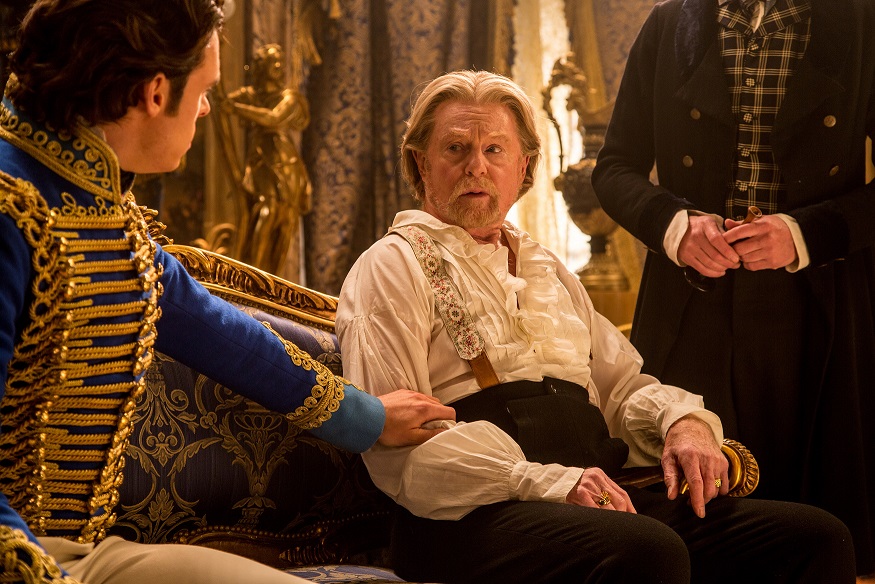
Prince Kit is a more developed character because of his elaborate relationships with other characters and his own character growth. It can be argued that Kit shows growth by embodying the literary ideals of entwicklungsroman and bildungsroman by the end of the film. Roberta Seelinger Trites explains in her book, Disturbing the Universe: Power and Repression in Adolescent Literature: “… the Entwicklungsroman, which is a broad category of novels in which an adolescent character grows, and the Bildungsroman, which is a related type of novel in which the adolescent matures to adulthood” 11. This growth and maturation to adulthood is seen in the character of Kit. The character growth is observed when earlier in the film Kit is not willing to defy his father when he is told to marry for advantage, but by the end of the film he does defy his father wishes. The scene of the King’s death we discussed earlier is worth repeating because in that scene the King says, “Just so. You’ve become your own man 12,” This is in response to Kit saying that he is no longer willing to marry for advantage. The King himself is acknowledging Kit’s growth and maturation to adulthood. Kit also shows his growth in the scene where he tells the Grand Duke and the Captain of the Guard to look for Ella. The Grand Duke tries to convince Kit not to keep looking for her and urges him to marry for advantage instead. The Grand Duke argues that since Kit is a new king he will need the strength and stability that marrying for advantage would provide. Kit responds by saying: “Agreed then let us be certain. I am King. I say that we seek out the mystery princesses. Even if she doesn’t want to be found I have to see her again 13.” Kit shows growth because he is not willing to accept the Grand Duke’s hesitancy and pushing, though earlier in the film Kit did not argue with the Grand Duke when he tells him he must marry for advantage. Kit is now able to take on the role of king because he has developed to adulthood, therefore reaching the ideals of entwicklungsroman and bildungsroman. By acknowledging that Kit has shown character development and reaching adulthood, there is a vast departure from the flat depictions of the Prince in the earlier versions of Cinderella.
It is important to note that Kit’s depiction in the film was a deliberate departure from the earlier versions of the Prince. This can be seen in interviews with those involved in the live action film. Richard Madden, the actor who plays Prince Kit in the live action film, stated in an interview with ScreenSlam:
…And in this version, you have a young man who’s got all his own problems and he’s a son and his father’s, you know, ill. So, there’s lots of things we don’t know about the Prince that we get to know in the film. And actually, it’s much more modern than what it was with the original animation. It’s not, you know a girl in distress and a man coming in to save her. It’s a man with his problems and a girl with hers. And it’s together that they become strong 14.
Richard’s comments prove that his depiction of Kit was a deliberate attempt to modernize the character and have that character demonstrate social values of today (i.e. the equality of men and women in a romantic relationship). Richard also acknowledges that Kit is dealing with his own struggles. The struggles Kit is facing is gaining confidence and authority as King while not disappointed his father whom he loves and respects. In my interview with Chris Weitz, he also discussed the deliberate changes in the character of Prince Kit:
Catrina: The character of Prince Kit seems a unique portrayal of Prince Charming. What made you decide to expand on his back story and make him more prominent in the film.”
Chris Weitz: Prince Charming is something of a cypher in the animated (1950) version and the Grimm and Perrault talks. I felt that whereas it was acceptable and even useful to have him be essentially symbolic in earlier versions (it was just enough that he was rich and important and handsome), an audience today demands a bit more in terms of identification. In fact you have to believe the notion that Cinderella would love Kit without knowing he was a prince. Hence the scene in the forest when they meet. And later in the film the idea is that both he and Cinderella have suffered loss. They are able to regard one another as equals rather than the more traditional construct of the prince rescuing Cinderella 15.
These statements show that the more developed character of Kit was deliberate, and that the development was used to create an equality in the relationship between Ella and Kit. Equality in a romantic relationship is a value held by society today, unlike the earlier versions of the prince where it was socially acceptable for him to simply be a “symbolic” and underdeveloped character. I also asked Chris about the relationship between Kit and his father:
Catrina: “The relationship between Kit and his father is very affectionate and emotional in the film, which is unique to other father/son relationships we usually see, especially with the “Prince Charming”, was that intended?”
Chris Weitz: “I certainly like the idea of having a very affectionate and warm, as opposed to an explosive and comical, relationship between the two. The way the prince feels his father’s loss in a way deepens his character 16.”
The close relationship between Kit and his father was also deliberate device used to deepen Kit’s character. This shows a change in social norms that men can have close relationships with their fathers and be emotional in those relationships. These statements prove the intended expansion of Kit’s character to modernize the Cinderella fairy tale for today’s society.
Adaptations of fairy tales show changing social norms and issues of the time. Fairy tales are uniquely qualified to do this because of how they lasted in history. In earlier versions of Cinderella, the character Prince Charming” is a one-dimensional, flat, symbolic character used to promote the social values of the time. Though it can be argued that the live action movie produced by Disney in 2015 is a conventional version of the Cinderella story, for example other recent adaptations have focused more on promoting feminism and diversity. the film diverges from its predecessors with the multidimensional and more complex character of Prince Kit. The character has his own story and is an active participant in Cinderella’s story as well. This is proven by his many multifaceted relationships and his proof of character growth by reaching the literary ideals of the entwicklungsroman and bildungsroman. It is important to note that the more thorough characterization of Kit adds to Ella’s story by providing the audience with a more equal and developed romantic relationship between its two main characters. Kit is also allowed to be emotionally close to his father and male friends without retribution marking a social change in the rigid idea of masculinity. This shows the changes in social ideals from earlier versions of the Cinderella tale.
Works Cited
- Tatar, Maria. “Cinderella.” The Classic Fairy Tales, W.W. Norton, New York, NY, 1999, pp. 101–137. ↩
- Zipes, Jack David. The Great Fairy Tale Tradition: from Straparola and Basile to the Brothers Grimm. New York: W.W. Norton, 2001. ↩
- Zipes, Jack. “Breaking the Disney Spell.” The Classic Fairy Tales, W.W. Norton, New York, NY, 1999, pp. 332-352 ↩
- Zipes, Jack. “Breaking the Disney Spell.” The Classic Fairy Tales, W.W. Norton, New York, NY, 1999, pp. 332-352 ↩
- Weitz, Chris. “Re: Questions about Cinderella.” Received by Catrina Beeny, 20 March 2017. ↩
- Candau, Brittany, and Cory Godbey. Have Courage, Be Kind: The Tale of Cinderella. Los Angeles, Disney Press, 2015. ↩
- Cinderella. Directed by Kenneth Branagh, Disney, 2015. ↩
- Cinderella. Directed by Kenneth Branagh, Disney, 2015. ↩
- Candau, Brittany, and Cory Godbey. Have Courage, Be Kind: The Tale of Cinderella. Los Angeles, Disney Press, 2015. ↩
- Cinderella. Directed by Kenneth Branagh, Disney, 2015. ↩
- Seelinger Trites, Roberta. Disturbing the Universe: Power and Repression in Adolescent Literature. Iowa City, University of Iowa Press., 2000. ↩
- Cinderella. Directed by Kenneth Branagh, Disney, 2015. ↩
- Cinderella. Directed by Kenneth Branagh, Disney, 2015. ↩
- YouTube. “Cinderella: Berlin Premiere Richard Madden Official Interview.” Cinderella: Berlin Premiere Richard Madden Official Interview, ScreenSlam, 17 Feb. 2015, www.youtube.com/watch?v=9gpt5Kp4OUA. ↩
- Weitz, Chris. “Re: Questions about Cinderella.” Received by Catrina Beeny, 20 March 2017. ↩
- Weitz, Chris. “Re: Questions about Cinderella.” Received by Catrina Beeny, 20 March 2017. ↩
What do you think? Leave a comment.
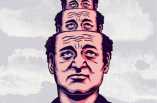
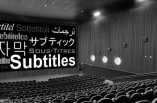
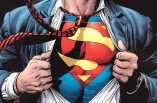

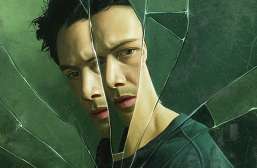
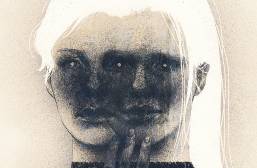

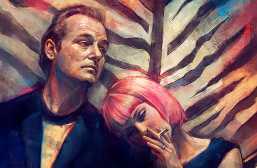
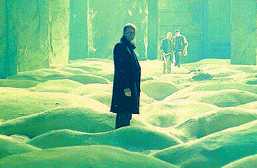
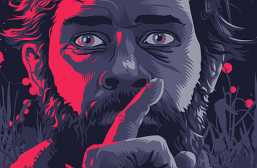
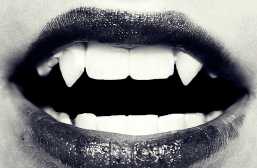
Hopefully the trend of creating more complex characters will continue with both genders.
So interesting! I love seeing the changes and growth these childhood tales have gone through. Great read!
Now I want to see the movie even more! I still haven’t seen it!
Sarah,
It is definitely worth watching!
Very interesting points! I too noticed that the Prince was more in-depth of a character in the 2015 film than in Disney’s animation adaptation, the most obvious example being that he gets a name in the newer film! I enjoyed how you brought in other examples as well to really so this character growth.
A great discussion and a really interesting point of view to take. Often when we are discussing Disney we tend to get caught up in the female gender construction with little consideration to the male depictions. Thanks for sharing a great and informative read.
Sarai,
Thank you for your help and corrections!
I loved seeing the Prince become a three-dimensional character in the new Cinderella! It made this rendition of the frequently retold story that much more different and noteworthy.
Great article! I thoroughly enjoyed reading it!
Fifty or so years ago Anthony Armstrong wrote The Naughty Princess. Prince Charming is ugly. Cinderella doesn’t want to go to the ball. She’s quite happy by the fireside, and later her shepherd boyfriend is going to call to take her for a moonlight stroll. The fairy godmother is as young as her. It’s her first job and the widow’s weeds are killing her. When she shows Cinderella the glass slipper, she says “You’re not expecting me to wear those are you?!” and they spend the next couple of hours trying on various shoes and settle on a fluffy pair of kitten heels. The ball is a disaster and to cap it all, when midnight strikes, Cinderella sprints out and down the steps but her tatters fail to materialise so she’s left quite naked… Can’t remember how it ends, though I did write a panto based on it that some in Fernhurst, I hope, remember to this day. (Nudity was discreet.) I appeared at the end as a prolix Superman (don’t ask) to save her father’s financial bacon.
Oh yes, just remembered. The shoe fits everybody including the Sisters and the boyfriend, so confusion all round.
Chau,
I will have to check that out!
If movie makers are in the mood for “revisionism” or updates to classics, maybe they should really turn the stories on their heads.
Turn Cinderella into a male POV fantasy….Cinderfella ?
Poor, over worked, under paid and unappreciated guy is noticed and rescued by a beautiful rich sugar momma making all of his dreams come true, after meeting at the local bowling alley.
Maybe instead of the shoe that fits the guys foot, the lost bowling ball that fits his fingers ?
Guys need to be rescued too.
I’d be up for a vegetarian wolf who adopts the three little pigs, after they are unceremoniously thrown out by their mum. They end up living in a caravan near Gravesend, where the pigs meet the three billy goats gruff and fall in love. Their mixed marriages produces three little Poats and three little Gigs. The wolf has in the meantime been caught secretly binging on sausages and is sent away for therapy.
Zamora,
I agree with both that it’s nice to see the classic redone, and see completely new versions and with the many versions of Cinderella they have done both.
What a wonderful film this is. I really do feel like thanking Sir Kenneth Branagh personaly for his effort as film director, and I do think that it’s success is mainly down to him. The acting is great, while there is no one performance that dominates above the others, thus leaving the wonderful, theatrical nature of this film to shine through, and, Disney’s new filming technique really works well with this film. It has that old Disney magic that I felt was so missing from Malificent, which is very nicely modernised, and it’s an on screen joy to watch. Helena Bonham Carter deserves a special mention for her performance which comes at the centre, or the turning point of the film, which goes from downtrodden Cinderella to an upbeat and confidently going for her man Cinderella.
I saw this almost by accident: had to be out of the home for an afternoon due to other activity going on. It being this time of movie dearth, at least in my neighborhood, Cinderella or Selma it was, and I’d already seen Selma.
There were only females in the audience, most of them very young, brought by moms, nannies or other caretakers, and it was obvious this wasn’t the first time seeing Cinderella for any of them.
If I’d been their age I’d have been enthralled. As it was, I was entertained nicely — once the utterly sickening prologue of the impossibly nauseating scenes of the perfect family before mom dies were over.
What was the point of this film? It felt like the whole thing was an exercise in Disney renewing their copyrights on glass slippers, shimmering blue dresses and cheerful antropomorphised mice. My three-year-old loved it, but given that hardly anything was changed from the 65-year-old cartoon version that’s hardly surprising
It’s refreshing to see something back to it’s old fashioned roots again, I’m a little sick of recent fairytale outings trying too hard to have a feminist message, or be overtly post modern or completely tongue in cheek. You know sometimes I just want a little bit of escapism in which the Prince looks handsome and the heroine looks good in a pretty frilly dress. So to me this looks really fun.
Cate is a force of nature.
Yes she is!
I didn’t think much of the Handsome Prince but other than that, I was quite surprised that I didn’t spend the entire time rolling my eyes and checking my watch.
I truly feel that this is one of those films that people will still be watching over generations to come.
Richard Madden is something else!
Disney should practice what they preach in this film – be courageous and kind (to their audience, that is). Forget about doing something new, they seem to be unable to make entertaining films even with age old fairy tales. Never thought one could find so many things to loathe in a Cinderella film!
The most annoying thing about the film is the godawful narration with choice of narrator being Helena Bonham Carter!
So, how does one take the charming Robb Stark and turn him into a totally forgettable character? Was it the combed back greasy hair or turtlenecks paired with horrible tights? He is terrible as the prince – absolutely lacking any emotion, let alone passion. He was all teeth, wrinkles and no expression.
Makes my heart warm, lovely wonderful and absolutely magical movie.
What an extraordinary, exceptional film! I just watched it after reading your analysis.
This is actually a wonderful gem that stays true to the original animation version.
I liked how we get to see a more in depth look at each character, particular the close relationship between Cinderella and her parents, and the events that led to the cruelty and coldness of her stepmother.
Great in-depth analysis of Cindrella. Sharing this to all my social media friends.
I LOVED this movie and found myself buying it a week after watching it on cable.
Branagh really out did himself with this film.
He did, he is a genius with adapting classic stories.
Be kind and have courage was the moral to this film adaptation. I really liked reading your analysis of it.
Imagine a young prince not interested in a mature mother when her daughters are around?
I love this film.
I love fairy tales for the very reason that each culture adapts it to communicate its own ideals. For example, they have traced the original Cinderella fairy tale to China–Yeh Xian. There is an adaptation called Yeh-Shen to that is very well done!
An enjoyable essay to read–how a role changes over time.
Thank you for writing this! I have been digging for something about the prince in the story, and was happy to find your article. His role means much more than it seems at first glance. I think, regardless of whether his character is developed or not, the importance of his very presence, as a man, in her life, is what is relevant. It her subconscious mind that needs a man on her side – the details are irrelevant. Both Cinderella and the prince are sort of symbols, if you wish, and the story is about a young abandoned woman’s subconscious needs in order to mature. She cannot mature in the situation she has with her family, but the presence of the prince allows her to take the next step. I think therefore the prince will represent any and every man in the reader’s mind, which is why the specific description of him is usually vague – so that it applies to every Cinderella’s story. But the poor guy deserves some more character development, unless you want to make the move the girl equivalent of one of those ‘guy’ movies that include only very basic female characters, who are also ‘symbols’ of a sort. . .
Elise, Im so glad you liked it and I couldn’t agree with you more!